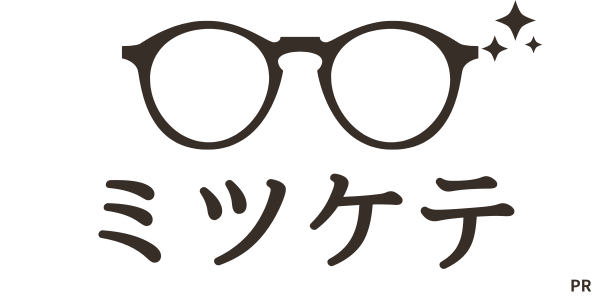When your parents say, “Here’s 1.2 million yen for your education,” it’s a generous gesture—but it’s important to understand the tax implications and how to record the transaction properly. Even when funds are meant for education, the way you use and manage them could trigger gift tax or raise suspicion of unreported cash holdings. This article explains why receiving the money via bank transfer is safer and how to manage educational funds securely and transparently.
- Is an Educational Gift Subject to Tax?
- Could Receiving Cash Raise Suspicion of “Hidden Savings”?
- Why Receiving the Money by Bank Transfer Is Safer
- Using the Special Education Fund Gift Exemption
- How to Avoid Being Suspected by Tax Authorities
- If the Tax Office Contacts You
- Smart Management After Receiving Education Funds
- Conclusion
Is an Educational Gift Subject to Tax?
When you receive financial assistance for educational purposes, the most important factor is “how the money is used.”
According to Japan’s Inheritance Tax Law, funds used for necessary living or educational expenses are not subject to gift tax. However, if the money is kept as savings or used for non-educational purposes, it may become taxable.
| Item | Tax-Exempt Case | Taxable Case |
|---|---|---|
| Tuition and Admission Fees | Paid directly to the school | Kept as savings |
| Cram School or Lesson Fees | Used for education | Used for hobbies or leisure |
| Study Abroad Expenses | Used for formal education | Includes tourism purposes |
To stay within the tax-free range, limit spending strictly to education-related costs. Keeping receipts and transfer records ensures you can easily explain the details to tax authorities if necessary.
Could Receiving Cash Raise Suspicion of “Hidden Savings”?
When receiving cash, if there’s no clear record of how it was used, it may be mistaken for unreported “cash savings.”
Such suspicions often arise during inheritance audits, as long-term cash holdings can be interpreted as undeclared assets.
| Cause of Concern | Why It Raises Suspicion | How to Prevent It |
|---|---|---|
| Cash received directly | No usage record | Keep transfer evidence |
| Long-term storage | Purpose not clearly educational | Spend promptly and keep documentation |
| Missing receipts | No proof of educational spending | Save all receipts and payment records |
Even if you receive cash, keeping proper records prevents problems.
Maintaining payment receipts and evidence of educational spending will eliminate any misunderstanding with tax authorities.
Why Receiving the Money by Bank Transfer Is Safer
Receiving money via bank transfer makes the flow of funds transparent.
Details such as who sent it, when, and how much are clearly shown on bank statements, helping you avoid future disputes or tax investigations.
| Method | Advantages | Points to Note |
|---|---|---|
| Cash | Immediate receipt | No traceable record |
| Bank Transfer | Transparent record of funds | Verify sender’s account name |
| Dedicated Education Account | Separates education funds from living expenses | Requires management effort |
Since “financial transparency builds trust,” bank transfer is the safest option. Bank records also serve as strong supporting evidence if explanations are ever required later.
Using the Special Education Fund Gift Exemption
If you’re receiving a lump sum of 1.2 million yen, consider using the “Special Education Fund Gift Exemption” system.
This allows parents or grandparents to give up to 15 million yen tax-free when funds are used strictly for education, managed through a trust bank account.
| Requirement | Details |
|---|---|
| Recipient’s Age | Under 30 years old |
| Purpose | Must be for educational expenses only |
| Documentation | Receipts or proof of payment required |
| Tax-Free Limit | Up to 15 million yen |
This exemption ensures you can receive large educational gifts safely without tax concerns.
How to Avoid Being Suspected by Tax Authorities
Whether you receive cash or a transfer, keeping evidence of how the funds were used for education is crucial.
Here’s how to manage your records effectively:
| Management Item | Description | Practice |
|---|---|---|
| Spending Log | Keep detailed notes of expenses | Record date, amount, and purpose |
| Receipts | Proof of legitimate spending | File and store annually |
| Transfer Record | Shows money flow | Keep sender’s bank transfer record |
Organized documentation allows for calm, confident responses if questioned by tax authorities.
If the Tax Office Contacts You
If contacted by the tax office, there’s no need to panic. As long as you can present receipts and transfer records proving educational use, the funds will be recognized as non-taxable.
Most inquiries are routine verification, not accusations. The best response is calm presentation of organized evidence and documentation.
Smart Management After Receiving Education Funds
After receiving the money, implement these management practices for full transparency:
- Open a separate bank account exclusively for education funds
- Summarize payments monthly for easy tracking
- File and store receipts by year
- Keep notes explaining each expense’s purpose
These steps make it easy to explain the fund’s use anytime and ensure that records remain clear.
Conclusion
Receiving 1.2 million yen from your parents for education is perfectly fine if the money is used properly. However, keeping cash without proof may cause suspicion of “hidden savings.”
Bank transfers are far safer, providing a transparent record of funds. Keeping detailed records and receipts prevents tax-related misunderstandings.
By using the Education Fund Gift Exemption, you can receive support with complete peace of mind.
Since this is money meant to invest in your education, maintaining transparency and clear documentation is key to preserving family trust and financial safety.
Accept support confidently, manage it responsibly, and use it meaningfully for your future.




